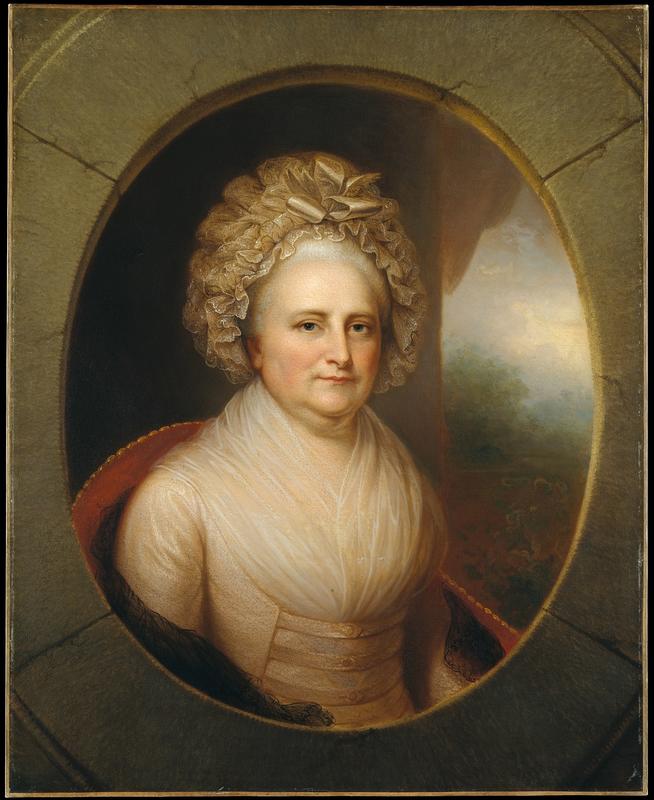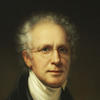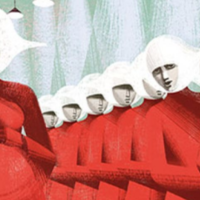More about Martha Washington

Sr. Contributor
Rembrandt Peale shows us the Martha Washington we learned about in junior high school: the plump, dowdy, dutiful wife of the great man in her matronly lace cap.
Peale did this portrait over 50 years after her death from an original by his father, Charles Willson Peale, and Martha is mythologized as the aged “mother” of the Nation. Will the real Martha Washington please stand up?
One might assume from this portrait and from our patriarchal history that Martha was a timid virgin when she married George Washington. In fact, she was a filthy rich widow of 27 with two kids from her previous marriage. She was better-educated than most women of her time, self-possessed and independent with a passion for gothic romance novels.
George was madly in love with his friend’s wife, Sally Fairfax, but Martha had charms of her own, and they weren’t all in the bank. She was a “sociable and pretty kind of woman.” George had to compete for her hand with a much richer man who praised her beauty and wished to “arouse a flame in her breast.” Records of her clothing measurements prove that she had a slim, attractive figure in her youth. The fact that she owned 300 slaves and five plantations from her first husband didn’t hurt.
She was also extremely fashion-forward, and especially liked her shoes. Imelda Marcos and Carrie Bradshaw would drool over her collection of chic, imported footwear. She made a particularly stunning statement with an outrageously expensive pair of sexy, purple heels with sparkles at her wedding to George, still in the Mount Vernon collection. Werk!
Furthermore, she was kind of a party girl. She loved dancing, socializing and hostessing. During the Revolutionary War she spent the winter seasons at her husband’s military camps, arranging dinners, balls and entertainment for the officers and their wives. Martha’s social scene was such a boost to morale that Washington asked to write off her expenses to Congress. Tradition depicts her as a motherly figure visiting the hovels of the common troops, but contemporary documents prove she was actually living it up with the rich people while the commoners were freezing their asses off at Valley Forge.
Martha freed the Washington slaves so they wouldn’t set her on fire...yes, you read that right. George specified in his will that the slaves would be free after Martha’s death, which gave them a pretty good incentive to hope she would croak soon. A mysterious fire at Mount Vernon heightened her paranoia, and Abigail Adams confirmed after a visit, “She did not feel as though her life was safe in their Hands, many of whom would be told that it was [in] their interest to get rid of her.” She freed them early out of fear, but freedom came at a terrible cost. Martha had about 100 dower slaves, meaning she had inherited them from her first marriage for the duration of her life, after which they must pass back into her first husband’s estate. Because the still-captive dower slaves had intermarried with the newly free slaves, their families were torn apart. Another shining example of the “prosperity and happiness” Ben Carson thinks slaves “immigrated” to America to find.
So, that’s the real Martha Washington: a beautiful and dirty rich shoe whore who partied like a rock star and owned slaves. Rembrandt Peale hardly did her justice.
Sources
- “National Portrait Gallery: Martha Washington,” accessed March 12, 2017, http://npg.si.edu/object/npg_NPG.75.3
- Brigid Schulte, “Fresh Look at Martha Washington: Less First Frump, More Foxy Lady,” The Washington Post, http://www.washingtonpost.com/wp-dyn/content/article/2009/02/01/AR20090…
- Elizabeth Sandwith Drinker, The Diary of Elizabeth Drinker (Boston: Northeastern University Press, 1991), 297.
- “Shoe Shopping with Martha Washington,” accessed March 12, 2017, http://www.mountvernon.org/george-washington/colonial-life-today/shoe-s…
- “Ten Facts About Martha Washington,” accessed March 12, 2017, http://www.mountvernon.org/george-washington/martha-washington/ten-fact…
- Nancy K. Loane, Following The Drum: Women at the Valley Forge Encampment (Washington DC: Potomac Books, 2009).
- Fritz Hirschfeld, George Washington and Slavery: A Documentary Portrayal (University of Missouri Press, 1997), 214, https://books.google.com/books?id=4YX3czE0SGYC&pg=PA214#v=onepage&q&f=f…
- “Martha Washington & Slavery,” George Washington’s Mount Vernon: Digital Encyclopedia, accessed March 3, 2017, https://web.archive.org/web/20150905135455/http://www.mountvernon.org/g…












